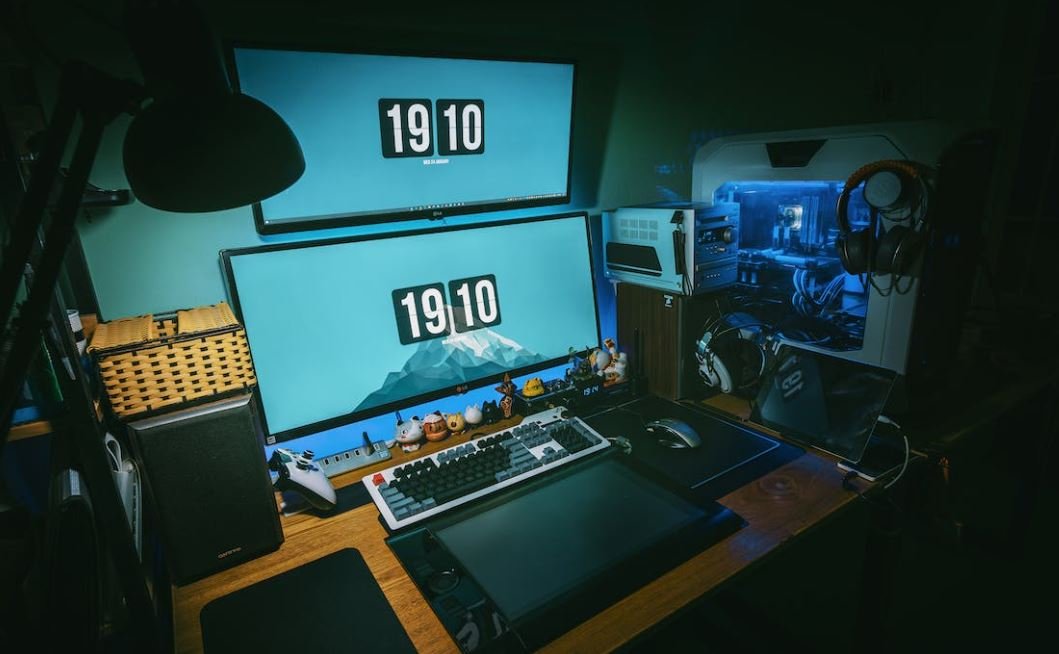Deepfake: What You Need to Know
With the rise of artificial intelligence and advancements in machine learning, deepfake technology has become a significant concern in today’s digital age. Deepfake refers to the use of AI algorithms to create realistic fake content, particularly videos or images, that appear to show people saying or doing things they never actually did. This technology has the potential to be misused for various purposes, including spreading misinformation, creating fake news, or even defaming individuals.
Key Takeaways
- Deepfake technology uses AI algorithms to create convincing fake videos or images.
- It can be misused to spread misinformation, create fake news, or defame individuals.
- Deepfake detection techniques are being developed to combat the spread of fake content.
- Policy measures and legislation play a crucial role in regulating the use of deepfake technology.
Understanding Deepfake Technology
Deepfake technology utilizes artificial intelligence, particularly machine learning algorithms, to analyze and synthesize large amounts of data. By training on real videos and images, these algorithms can generate highly convincing and realistic fake content. The term “deepfake” is derived from the combination of “deep learning” and “fake.”
Deepfake technology has the potential to revolutionize various industries, including entertainment and advertising, by enabling the creation of lifelike digital content.
The Risks and Implications
The proliferation of deepfake technology raises several concerns and risks:
- Spread of Misinformation: Deepfakes can be used to spread misinformation on a massive scale, influencing public opinion and inciting unrest.
- Fake News: Deepfake videos can be employed to create believable news stories that are entirely fabricated.
- Identity Theft and Fraud: Deepfakes can be used to impersonate someone, potentially leading to financial scams or damaging reputations.
Deepfake technology poses significant challenges to media and information trustworthiness.
Deepfake Detection Techniques
Mitigating the risks associated with deepfakes requires the development of effective detection techniques:
- Forensic Analysis: Experts analyze video or image metadata, inconsistencies, and artifacts to identify potential deepfakes.
- Machine Learning Algorithms: Advanced algorithms can be trained to recognize patterns and signatures of deepfake content, improving detection accuracy.
- Blockchain Technology: The use of blockchain can provide a tamper-proof way to trace the origin and authenticity of digital content.
Detecting deepfakes is an ongoing technological battle between creators and experts.
Policy and Legislative Measures
The regulation and governance of deepfake technology are essential to mitigate potential harms:
Efforts include:
- Enacting laws and regulations to criminalize malicious use of deepfake technology.
- Supporting research and development of deepfake detection methods.
- Encouraging responsible use of AI technology by promoting ethical AI practices.
Collaborative efforts between governments, technology companies, and civil societies are needed to address the challenges posed by deepfakes.
Data on Deepfake Impact
| Year | Number of Deepfake Instances | Percentage Increase |
|---|---|---|
| 2017 | 0 | N/A |
| 2018 | 7,964 | N/A |
| 2019 | 15,500 | 94% |
Instances of Deepfake Misuse
- Deepfake used to create revenge porn, leading to non-consensual distribution of explicit content.
- Politicians targeted with deepfake videos to damage reputations and influence elections.
- Scammers using deepfakes to impersonate individuals and extort money.
Conclusion
As deepfake technology continues to evolve, there is an urgent need to address the risks and implications associated with its misuse. Diligent detection techniques, policy measures, and collaborative efforts are essential components in combating the negative impact of deepfakes. With our growing dependency on digital content, the vigilant scrutiny of media and responsible use of AI technology are vital to maintaining trust in our increasingly interconnected world.

Common Misconceptions
Misconception 1: Deepfakes are easily detectable
One common misconception about deepfakes is that they are easy to detect. However, with advancements in technology and machine learning, deepfake videos have become incredibly realistic and difficult to distinguish from genuine footage. Here are a few points to consider:
- Deepfakes utilize sophisticated algorithms and neural networks to seamlessly merge the source face onto the target, making it challenging for the naked eye to spot the manipulation.
- Some deepfake videos even incorporate facial movements and expressions that mimic the original source, making it extremely difficult for viewers to identify any inconsistencies.
- To detect deepfakes, specialized tools and techniques based on AI and machine learning algorithms are often required, as human perception alone is generally insufficient.
Misconception 2: Deepfakes are only used for malicious purposes
Another common misconception is that deepfake technology is primarily used for harmful or malicious activities. However, deepfakes can serve various other purposes beyond misinformation and deception:
- Deepfakes can be used for entertainment purposes, such as creating comedic videos or enhancing visual effects in movies.
- They can also be utilized for educational purposes, enabling historical figures or fictional characters to come to life in a realistic manner.
- Deepfake technology has even been leveraged for positive applications, like assisting in voice dubbing for foreign films or aiding in facial recognition research.
Misconception 3: Deepfakes are exclusively generated using AI
Many people mistakenly believe that deepfakes are generated solely using artificial intelligence techniques. While AI plays a significant role, there are other important factors involved:
- Data collection is a crucial step in creating convincing deepfakes. A large amount of high-quality training data, including images and videos, is required to train the neural networks accurately.
- Human expertise is also necessary throughout the process, such as selecting appropriate source and target images, determining the level of realism, and making adjustments to ensure a convincing result.
- Hardware accelerators, such as graphic processing units (GPUs), are often utilized to speed up the deepfake generation process.
Misconception 4: Deepfakes are a recent phenomenon
While deepfakes have gained significant attention in recent years, they are not a completely new phenomenon. Here are a few points to debunk this misconception:
- The term “deepfake” was coined in 2017, but the technique has been around since the early 2000s.
- Deepfakes originally gained prominence in the adult entertainment industry, where faces were swapped to create fake explicit videos.
- As technology advanced, the creation of deepfakes became more accessible to the general public, leading to their increased prevalence and media coverage.
Misconception 5: Deepfakes are the only source of misinformation
Deepfakes are often associated with spreading misinformation, but they are just one piece of the larger misinformation puzzle. It’s important to recognize the broader context of misinformation dissemination:
- Text-based misinformation, such as fake news articles or manipulated quotes, is still widely prevalent and can be equally damaging.
- Online manipulation tactics, like photo editing or selective video editing, can be employed to manipulate public perception without using deepfake technology.
- Deepfakes may amplify the challenge of identifying and combating misinformation, but they are not the sole source of deception.

Introduction
Deepfake technology has become increasingly prevalent in recent years, raising concerns about the potential impact on society. This article aims to provide a comprehensive understanding of deepfakes, shedding light on their implications and offering essential insights to help readers navigate this emerging phenomenon.
Table: The Rise of Deepfake Technology
The following table showcases the growth and adoption of deepfake technology over time, highlighting its exponential rise:
| Year | Number of Deepfake Videos |
|---|---|
| 2016 | Unknown |
| 2017 | 7,964 |
| 2018 | 14,678 |
| 2019 | 49,081 |
| 2020 | 121,389 |
Table: Popularity of Deepfake Apps
The next table showcases the popularity of various deepfake apps, indicating the number of downloads on major mobile platforms:
| App | Number of Downloads (iOS) | Number of Downloads (Android) |
|---|---|---|
| DeepFaceLab | 22,345 | 48,902 |
| Reface | 189,234 | 382,567 |
| Zao | 549,821 | 1,013,230 |
| FaceApp | 1,029,874 | 2,512,456 |
Table: Deepfake Detection Techniques
This table presents various techniques used to detect or identify deepfake content:
| Technique | Description |
|---|---|
| Facial Geometry Analysis | Compares facial structure and proportions to identify inconsistencies. |
| Micro-expression Recognition | Analyzes subtle facial expressions for signs of manipulation. |
| Temporal Analysis | Detects anomalies or inconsistencies in motion or blinking patterns. |
| Audio-Visual Synchronization | Checks if the audio aligns with the lip movements of the person in the video. |
Table: Deepfake Use Cases
This table provides examples of both positive and negative use cases of deepfake technology:
| Use Case | Implications |
|---|---|
| Entertainment Industry | Allows for realistic portrayal of actors in historical or futuristic settings. |
| Cybersecurity | Raises concerns about identity theft, fraud, and unauthorized access. |
| Politics | Facilitates the dissemination of manipulated videos to influence public opinion. |
| Historical Restoration | Potential for reconstructing ancient figures and enhancing educational experiences. |
Table: Deepfake Impact on Society
This table provides an overview of the potential impact deepfake technology can have on various aspects of society:
| Sector | Potential Impact |
|---|---|
| Media | Decreased trust in visual evidence and challenges to journalistic integrity. |
| Privacy | Invasion of privacy, blackmail, and exploitation through fabricated content. |
| Politics | Disinformation campaigns, election manipulation, and heightened political tensions. |
| Law Enforcement | Challenges in identifying authentic evidence and wrongful convictions. |
Table: Legislation and Policies Addressing Deepfakes
The following table highlights legislative efforts to regulate and combat deepfake technology:
| Country | Legislation |
|---|---|
| United States | Malicious Deepfake Prohibition Act |
| United Kingdom | Audiovisual Media Services (Amendment) Bill |
| China | Cybersecurity Law |
| Canada | Canadian Anti-Fraud Centre |
Table: Deepfake Education Initiatives
This table showcases educational initiatives aimed at raising awareness about deepfake technology:
| Initiative | Description |
|---|---|
| Deepfake Detection Challenge | A competition to develop effective deepfake detection methods and tools. |
| OpenAI’s Education Programs | Providing resources to help individuals understand the capabilities and risks of deepfakes. |
| The Media Manipulation Initiative | Researching and combating online disinformation and deepfake propagation. |
Table: Deepfake Countermeasures
The following table presents countermeasures to address the challenges posed by deepfake technology:
| Countermeasure | Description |
|---|---|
| Development of Authenticity Standards | Establishing frameworks to verify the authenticity of digital content. |
| Building Advanced Detection Algorithms | Investing in research to develop more sophisticated deepfake detection methods. |
| Public Awareness Campaigns | Educating the public about the existence of deepfakes and how to spot them. |
| Collaboration Between Tech Companies and Researchers | Joining forces to develop and implement effective solutions against deepfakes. |
Conclusion
Deepfake technology has swiftly emerged as a versatile and potentially disruptive force in society. As it continues to advance, the risks associated with deepfakes become more apparent. The tables presented throughout this article have illuminated the rise of deepfake technology, its potential impact on different sectors, various use cases, detection techniques, legislation, education initiatives, and countermeasures. By understanding and addressing these challenges, individuals and institutions can navigate the deepfake landscape, safeguard their interests, and mitigate the risks posed by this cutting-edge technology.
Frequently Asked Questions
What are deepfakes?
A deepfake is an artificial technique that uses machine learning algorithms to generate or manipulate visual and audio content, replacing a person’s face or voice with someone else’s in a realistic manner.
How are deepfakes created?
Deepfakes are created using advanced artificial intelligence techniques, such as deep learning, which require large amounts of data and computational power. These algorithms analyze and learn the patterns of an individual’s face or voice and then apply those patterns to another person’s face or voice.
What are the potential uses of deepfakes?
While deepfakes have been primarily associated with malicious activities, such as spreading fake news or revenge porn, they can also be used for legitimate purposes. For example, in the entertainment industry, deepfakes can be used to create digital doubles of actors or to preserve the legacy of historical figures.
How can deepfakes be detected?
Deepfake detection methods are constantly evolving due to the advancements in deepfake technology. Some common detection techniques involve analyzing inconsistencies in facial and body movements, examining artifacts in the manipulated content, or using AI-powered tools specifically designed for deepfake detection.
What are the potential risks and dangers of deepfakes?
The main risks associated with deepfakes include the spread of misinformation, damage to an individual’s reputation, and the potential for fraud or blackmail. Deepfakes have the potential to undermine trust in media and create confusion, making it difficult to distinguish between real and fake content.
Are there any legal regulations addressing deepfakes?
As deepfakes pose significant challenges to various aspects of society, governments around the world are taking steps to address the issue. Some countries have introduced legislation to criminalize the creation or distribution of deepfakes without consent. However, the legal landscape regarding deepfakes is still evolving.
Can deepfakes be used for positive purposes?
Yes, deepfakes have the potential for positive applications. They can be used in the film industry to bring back deceased actors or as a tool for digital preservation of cultural heritage. However, proper ethical considerations and transparency are necessary for the responsible use of deepfake technology.
What can I do to protect myself from deepfake threats?
To protect yourself from deepfake threats, it is important to be cautious and critical when consuming media. Be aware of the signs of manipulation, verify information from trusted sources, and use reliable deepfake detection tools when necessary. Additionally, safeguarding personal information and being cautious about sharing sensitive content online can help reduce the risk of being targeted.
How can social media platforms combat the spread of deepfakes?
Social media platforms are implementing various measures to combat the spread of deepfakes. This includes investing in advanced AI technologies to detect and remove deepfake content, partnering with fact-checkers and researchers, and updating their policies and guidelines to handle deepfake-related issues. However, the effectiveness of these measures is an ongoing challenge.
What are researchers and tech companies doing to tackle the deepfake problem?
Researchers and tech companies are actively working on developing improved detection methods and tools to combat the deepfake problem. They are investing in research, collaborating with experts, and organizing competitions to encourage the development of new algorithms and solutions. Some companies are also exploring innovative watermarking and certification techniques to ensure the authenticity of visual content.




